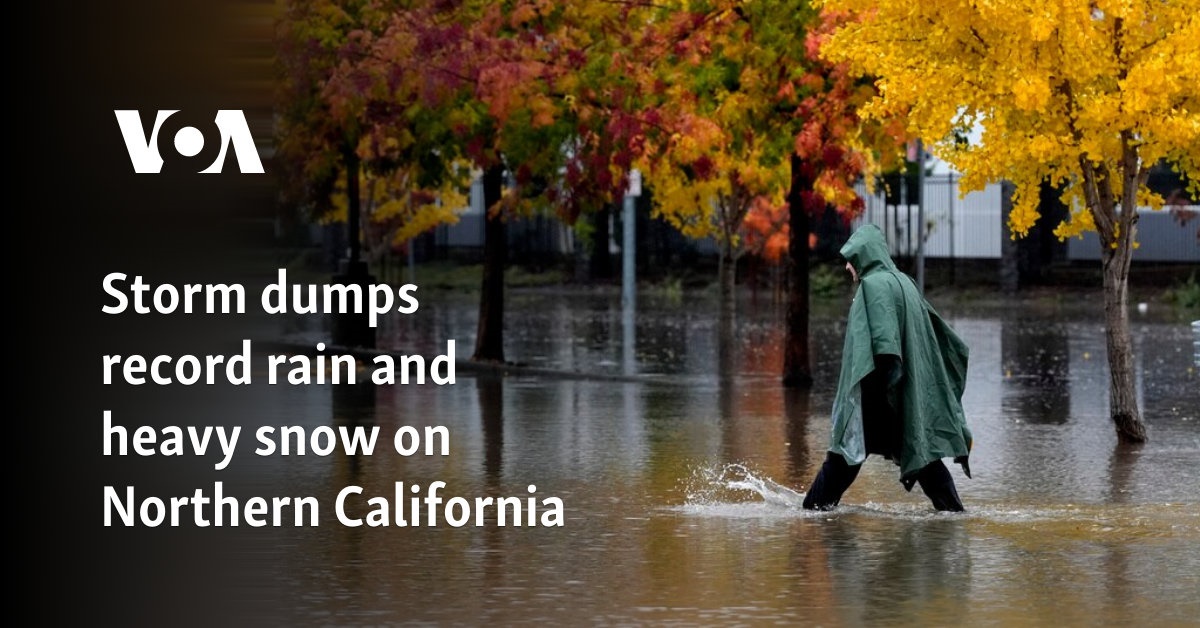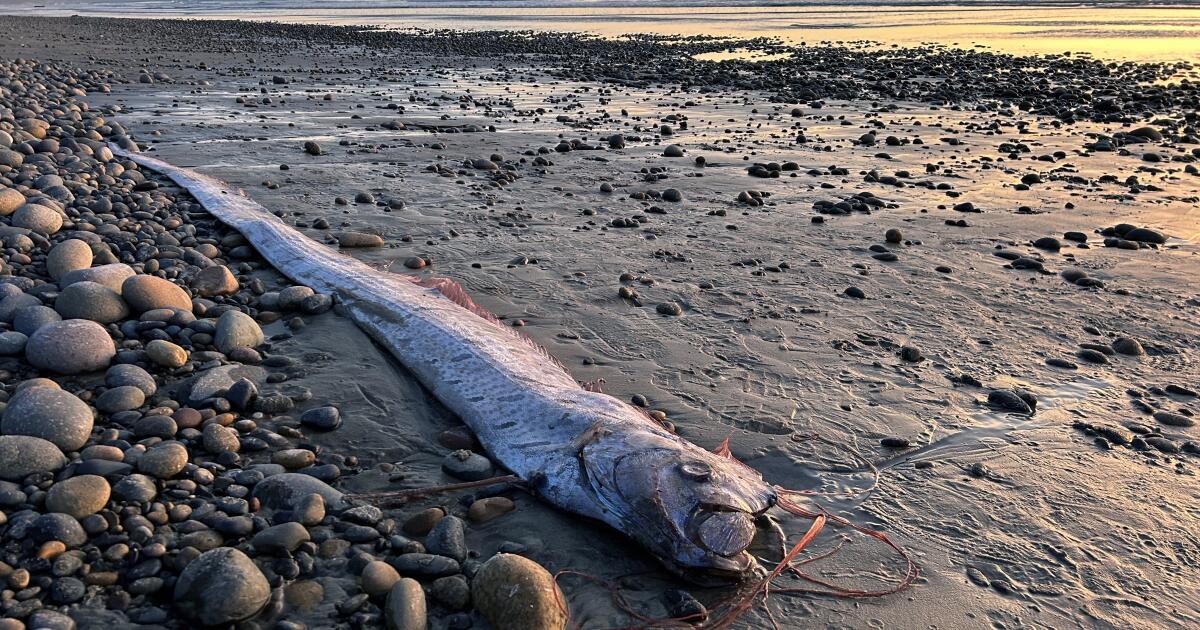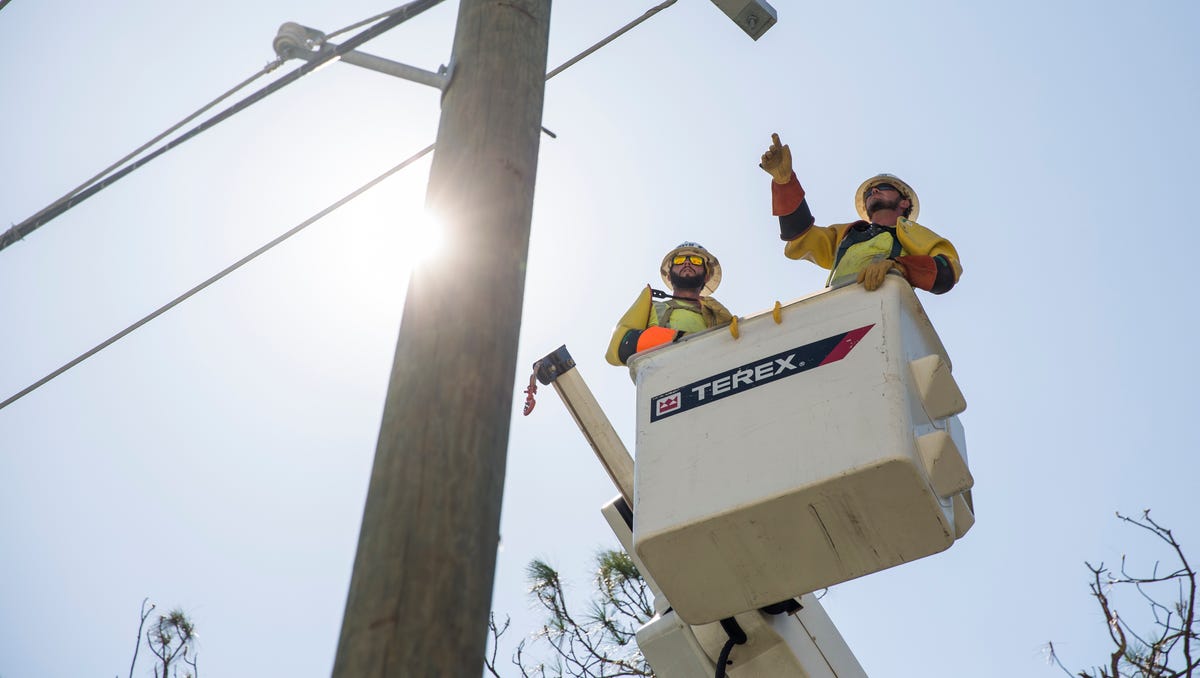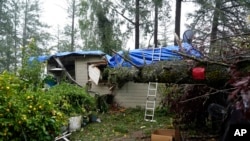California
California woman loses hands, legs after eating undercooked Tilapia fish

A woman in California had to have all of her limbs amputated after eating undercooked tilapia fish that had been contaminated with a lethal strain of bacteria, the New York Post reported.
Laura Barajas, a 40-year-old mother, spent more than a month in the hospital fighting an infection of Vibrio vulnificus bacteria before having all of her limbs removed during a lifesaving surgery, the report said.
“It’s just been really heavy on all of us. It’s terrible. This could’ve happened to any of us,” KRON reported Barajas’ friend Anna Messina as saying.
Messina said Barajas became sick after eating the fish that she had purchased at a local market in San Jose and made for herself at home.
“She almost lost her life. She was on a respirator,” Messina was reported as saying.
“They put her into a medically induced coma. Her fingers were black, her feet were black, and her bottom lip was black. She had complete sepsis, and her kidneys were failing,” Messina added.
Messina said Barajas contracted Vibrio vulnificus, a potentially deadly bacterium commonly found in raw seafood and seawater. This underscores the critical importance of properly preparing and handling seafood to avoid such severe health risks.
“The ways you can get infected with this bacteria are, one, you can eat something that’s contaminated with it [and] the other way is by having a cut or tattoo exposed to water in which this bug lives,” KRON reported infectious disease expert Dr. Natasha Spottiswoode of UCSF as saying.
The Centers for Disease Control and Prevention, on September 1, issued a health advisory, warning of an increase in Vibrio vulnificus bacterial infections in the US due to increasing water tempuratures.
Vibrio vulnificus is a bacteria that thrives in warmer waters of the Gulf of Mexico, according to the CDC. Vibrio bacteria are known to cause around 80,000 illnesses in the United States each year, according to the agency.
Signs of a Vibrio vulnificus infection are watery diarrhea, stomach cramping, nausea, vomiting, and fever, the CDC ssaid. An infected wound may display redness, pain, swelling, warmth, discoloration, and discharge, the CDC added.
Download The Mint News App to get Daily Market Updates.
More
Less
Updated: 18 Sep 2023, 05:48 PM IST

California
Storm dumps record rain and heavy snow on Northern California

A major storm moving through Northern California on Thursday dropped heavy snow and record rain, flooding some areas, after killing two people and knocking out power to hundreds of thousands in the Pacific Northwest.
Forecasters warned that the risk of flash flooding and rockslides would continue, and scores of flights were canceled at San Francisco’s airport.
In Washington, nearly 223,000 people — mostly in the Seattle area — remained without power as crews worked to clear streets of electrical lines, fallen branches and debris. Utility officials said the outages, which began Tuesday, could last into Saturday.
Meanwhile on the East Coast, where rare wildfires have raged, New York and New Jersey welcomed much-needed rain that could ease the fire danger for the rest of the year.
The National Weather Service extended a flood watch into Saturday for areas north of San Francisco as the region was inundated by this season’s strongest atmospheric river — a long plume of moisture that forms over an ocean and flows through the sky over land.
The system roared ashore Tuesday as a ” bomb cyclone,” which occurs when a cyclone intensifies rapidly. It unleashed fierce winds that toppled trees onto roads, vehicles and homes, killing at least two people in the Washington cities of Lynnwood and Bellevue.
Communities in Washington opened warming centers offering free internet and device charging. Some medical clinics closed because of power outages.
“I’ve been here since the mid-’80s. I haven’t seen anything like this,” said Trish Bloor, who serves on the city of Issaquah’s Human Resources Commission, as she surveyed damaged homes.
Up to 41 centimeters of rain was forecast in southwestern Oregon and California’s northern counties through Friday.
Santa Rosa saw 16.5 centimeters of rain in the last 24 hours, marking the wettest day on record since 1998, according to Joe Wegman, a meteorologist with the National Weather Service.
The Sonoma County Airport, in the wine country north of San Francisco, got more than 28 centimeters within the last 48 hours. The Ukiah Municipal Airport recorded about 7.6 centimeters Wednesday, and the unincorporated town of Venado had about 32.3 centimeters in 48 hours.
In nearby Forestville, one person was hurt when a tree fell on a house. Small landslides were reported across the North Bay, including one on State Route 281 on Wednesday that caused a car crash, according to Marc Chenard, a weather service meteorologist.
Daniela Alvarado said calls to her and her father’s Sonoma County-based tree business have nearly tripled in the last few days, with people reaching out about trimming or removing trees.
“We feel sad, scared, but also ready for action,” Alvarado said.
Rain slowed somewhat, but “persistent heavy rain will enter the picture again by Friday morning,” the weather service’s San Francisco office said on the social platform X. “We are not done!”
Dangerous flash flooding, rockslides and debris flows were possible, especially where hillsides were loosened by recent wildfires, officials warned. Scott Rowe, a hydrologist with the weather service in Sacramento, said that so far the ground has been able to absorb the rain in Butte and Tehama counties, where the Park Fire burned this summer.
“It’s not necessarily how much rain falls; it’s how fast the rain falls,” Rowe said.
Santa Rosa Division Chief Fire Marshal Paul Lowenthal said 100 vehicles were stuck for hours in the parking lot of a hotel and medical center after being swamped by thigh-high waters from a flooded creek.
A winter storm watch was in place for the northern Sierra Nevada above 1,070 meters, with 38 centimeters of snow possible over two days. Wind gusts could top 121 kph in mountain areas, forecasters said.
Sugar Bowl Resort, north of Lake Tahoe near Donner Summit, picked up 30 centimeters of snow overnight, marketing manager Maggie Eshbaugh said Thursday. She said the resort will welcome skiers and boarders on Friday, the earliest opening date in 20 years, “and then we’re going to get another whopping of another foot or so on Saturday, so this is fantastic.”
Another popular resort, Palisades Tahoe, said it is also opening Friday, five days ahead of schedule.
The storm already dumped more than 30 centimeters of snow along the Cascades in Oregon by Wednesday night, according to the weather service.
More than a dozen schools closed in the Seattle area Wednesday, and some opted to extend the closures through Thursday.
Covington Medical Center southeast of Seattle postponed elective surgeries and diverted ambulances after losing power and having to rely on generators Tuesday night into Wednesday, according to Scott Thompson, spokesperson for MultiCare Health System. Nearby, MultiCare clinics closed Wednesday and Thursday after losing power.
In Enumclaw, also southeast of Seattle, residents were cleaning up after their town clocked the highest winds in the state Tuesday night: 119 kph.
Ben Gibbard, lead singer of the indie rock bands Death Cab for Cutie and Postal Service, drove from his Seattle neighborhood Thursday morning to the woods of Tiger Mountain for his regular weekday run, but trees were blocking the trail.
“We didn’t get hit that hard in the city,” he said. “I just didn’t assume it would be this kind of situation out here. Obviously you feel the most for people who had their homes partially destroyed by this.”
Washington Gov. Jay Inslee thanked utility crews for toiling around the clock. It could take weeks to assess the scope of the damage and put a dollar figure on it, he said in a statement, and after that “we’ll know whether we will be able to seek federal assistance.”
In California, there were reports of nearly 13,000 power outages.
Authorities limited vehicle traffic on part of northbound Interstate 5 between Redding and Yreka due to snow, according to California’s Department of Transportation. Officials also shut down a 3.2-kilometer stretch of the scenic Avenue of the Giants, named for its towering coast redwoods, due to flooding.
About 550 flights were delayed and dozens were canceled Thursday at San Francisco International Airport, according to tracking service FlightAware.
Parched areas of the Northeast got a much-needed shot of precipitation, providing a bit of respite in a region plagued by wildfires and dwindling water supplies. More than 5 centimeters was expected by Saturday morning north of New York City, with snow mixed in at higher elevations.
Weather service meteorologist Brian Ciemnecki in New York City, which this week saw its first drought warning in 22 years, said “any rainfall is going to be significant” but the storm will not be enough to end the drought.
California
'Doomsday fish' washed ashore in California, but what does that mean?

If one oarfish landing on a beach is a sign of a disaster to come, how bad will it be if three wash up in quick succession?
A silvery 10-foot-long creature, the oarfish has fueled fisherman’s tales of sea serpents — and in some cultures has been a portent of natural disasters.
It’s rare to see an oarfish up close in California; only 22 have washed ashore since 1901, according to UC San Diego’s Scripps Institution of Oceanography. But in the last three months, three of them have surfaced on Southern California beaches.
The latest was on Nov. 6, when an oarfish was discovered at Grandview Beach by Alison Laferriere, a doctoral candidate at Scripps Institution of Oceanography. The other two beached in La Jolla and Huntington Beach.
The last time a series of oarfish came ashore in California and other parts of the world was over several months in 2013 and 2014. Misty Paig-Tran, associate professor of biological science at Cal State Fullerton, studied four of them.
Every time an oarfish makes an appearance on the sand, it’s a spectacle for scientists as well as the general public for several reasons.
To start with, nobody is expecting a behemoth that’s up to 25 feet long to come so close to the California coast, said Paig-Tran.
“What’s special about them is that when they’re freshly dead or just about to die and you look at their skin, it actually [looks] like a mirror,” she said.
Its length combines with its silver skin and bright red scarlet fins to give it a mythical look.
Since the 1500s, sailors have told of sea monsters as long as their ships, and have even drafted maps that warned of areas in the ocean where such creatures resided. Their depictions appear to describe oarfish.
Oarfish generally live in the upper layers of the ocean depths, from about 300 feet to almost 3,000 feet underwater. Scientists call this section of the ocean the “twilight zone” because the fish that inhabit it are basically living in darkness with only a small glimpse of light, Paig-Tran said.
The twilight zone is too deep for divers to reach and explore, adding to the allure of this species.
If an oarfish happens to swim up to the ocean’s surface, a sailor would see a long slithering creature with spiky protrusions on its head and could believe it was a sea monster, Paig-Tran said.
It’s a jarring sight, but oarfish are anything but dangerous. Oarfish are bottom feeders, meaning they primarily feed on krill (a small shrimp-like creature) using powerful mouths shaped liked vacuum nozzles, according to Scripps.
An oarfish’s body is extremely delicate, so much so that if you pick one up it could break in half because of its jelly-like bones, Paig-Tran said.
Another factor that adds to the mystique of this creature is the lack of knowledge about its history and daily life, including how it mates, when it lays eggs, what its movement patterns are and how often it feeds.
Scientists are able to study the creatures only when they wash up on a beach.
“When a body comes up, we can do our best to look to the biology and the physiology and try to make our best guesses, but we don’t get to see it living in its natural environment,” Paig-Tran said. “It’s a completely open-ended question of what’s going on with these fishes.”
Why are dead oarfish washing ashore?
Scientists don’t know why these oarfish have died and washed ashore.
The latest oarfish spotted in Encinitas was recovered by a team of NOAA Fisheries Service and transported to Southwest Fisheries Science Center, where it will undergo an autopsy so researchers can learn more about the biology, anatomy, genomics and life history of oarfish, according to Scripps.
The deaths of the three fish that have surfaced “may have to do with changes in ocean conditions and increased numbers of oarfish off our coast,” said Ben Frable, manager of Scripps Oceanogaphy Marine Vertebrate Collection.
“Sometimes it may be linked to broader shifts, such as the El Niño and La Niña cycle, but this is not always the case,” he said.
There was a weak El Niño earlier this year, and this wash-up coincided with the recent red tide and Santa Ana winds last week. But many other factors could have played a role in these strandings, Frable added.
Another possible explanation is that the oarfish got stuck in a current and couldn’t go back down into deeper waters.
Oarfish aren’t strong swimmers. They primarily rely on their dorsal fin, whereas strong swimmers use their caudal fin or back tail, Paig-Tran said.
An oarfish that gets caught in a current and is taken up to the surface doesn’t have a good way to get back down.
“If you are a fish that lives in the deep and you got stuck on the surface, you’re kind of hosed,” she said.
Where did the “doomsday” name come from?
Oarfish have been dubbed “doomsday” fish because some cultures consider it a bad sign when they appear. The moniker is derived from a manipulation of Japanese folklore that became popular following the Fukushima disaster, Frable said.
“In the two years prior to the disaster, about a dozen oarfish washed up in Japan, most hundreds of miles away from this area.” he said.
In the aftermath of the natural disaster, people latched onto these strandings as an omen of the disaster.
This prompted researchers in Japan in 2019 to test whether oarfish and other deep-sea animal strandings were correlated with earthquakes, tsunamis and other factors.
“They found no correlation whatsoever,” Frable said. “But the name is too evocative to disappear.”
On the other hand, Paig-Tran said there could be some truth to the myth because when an earthquake happens, it releases pressure that can change a current underwater.
“When the pressure gets released, it changes the currents that [the fish are] living in, and it brings them up to the surface with this kind of big bolus of air and gasses and whatever the turbulence [is] from this earthquake,” she said.
So, are the oarfish that surfaced in Southern California a harbinger of a massive earthquake? According to Paig-Tran: probably not.
California
Trump wants even looser AI guardrails. How California could impose more

In summary
President-elect Trump has vowed to rescind an executive order that imposed AI safeguards, and could use tech to enable mass deportations. How far will California the other direction?
California Gov. Gavin Newsom is preparing to wage a legal war against President-elect Donald Trump, convening a special legislative session next month to try to “Trump-proof” the state. But it appears Newsom and California legislators won’t initially include artificial intelligence safeguards in that fight, even though AI regulations were a major preoccupation of the Legislature this year.
Trump has promised to immediately rescind President Joe Biden’s executive order that had imposed voluntary AI guardrails on tech companies and federal agencies. The president-elect’s administration could also, immigrant advocates say, use AI tools to assist the mass deportation he has pledged to implement.
While California adopted a number of AI regulations earlier this year, other issues are likely to take priority in Newsom’s special session, legislators told CalMatters.
There are signs, though, that AI could — in the not-so-distant future — go from abstract concern to prominent political cudgel between the Trump administration and California’s Democratic leaders. It could be another high-profile way to challenge Trump and his newfound tech allies, some of whom have gleefully proclaimed a new, deregulated era for artificial intelligence products.
“I think Newsom and the California Legislature have an opportunity to step into the gap that the federal government is leaving — to create a model environment for safe and rights-respecting technology and deployment,” said Janet Haven, executive director of the Data & Society Research Institute, a nonprofit that studies the social implications of AI and other technologies. “On the other hand, there’s no way to get around the fact that Big Tech is right there, and will be a huge factor in whatever the California Legislature and Newsom want to advance in terms of AI legislation.”
Why California lawmakers and others worry about AI
AI safety advocates told CalMatters they’re not necessarily sweating the apocalyptic AI nightmares imagined by some doomsayers. Instead, they are focused on how AI tools are increasingly used in healthcare, housing, the labor force, law enforcement, immigration, the military, as well as other industries and fields prone to discrimination, surveillance, and civil rights violations — because there’s evidence that such tools can be unwieldy, inaccurate, and invasive. “We have documentation that shows how these AI systems are likely to do all sorts of things—they’re pattern-making systems, they’re not really decision-makers, but the private sector and the public sector are using them as a substitute for decision-makers,” said Samantha Gordon, chief program officer at TechEquity. “That’s not wise.”
Santa Ana Democratic Sen. Tom Umberg told CalMatters that 2024 “was a bit of a testing year” for AI bills. California lawmakers outlawed sexually explicit deepfakes and certain election-related deepfake content, required tech companies to provide free AI detection tools, and stipulated that tech companies must publicly release data about their AI training tools.
Gov. Newsom ultimately signed roughly 20 AI bills into law. But he also controversially vetoed a major bill by San Francisco Democratic Sen. Scott Wiener and would’ve instituted significant testing requirements on AI tools to make sure they avoid catastrophic outcomes. In his veto message, Newsom wrote that the bill risked curtailing innovation, but he added that he wanted to “find the appropriate path forward, including legislation and regulation.”
“Newsom’s incentive for strengthening his relationship with Silicon Valley is probably stronger than his need for yet one more issue to fight over with Donald Trump.”political analyst Dan Schnur
Wiener told CalMatters he’s working on updated legislation that could garner “broader support.” Such a bill would presumably include additional buy-in from the tech sector, which the state is relying on for tax revenues, and which has a notable lobbying presence in Sacramento — Google just racked up the largest quarterly lobbying tab in a decade.
Asked whether to expect more Big Tech lobbying against regulatory efforts in California, Palo Alto Democratic Assemblymember Marc Berman said: “It’s going to be a good time to be a lobbyist. They’re going to do very well.”
Though Wiener’s AI testing bill was batted down, as were a few other noteworthy AI bills that didn’t make it out of the Legislature, California is “far and away the center of AI regulation in the U.S,” said Ashok Ayyar, a Stanford research fellow who co-wrote a comparative analysis of Wiener’s bill against the European Union’s more comprehensive AI efforts.
A lack of federal AI regulation and legislation
California is leading on AI in large part because the competition is basically non-existent.
Congress hasn’t passed meaningful AI legislation. Asked about Trump and the incoming Republican majority, San Ramon Democratic Assemblymember Rebecca Bauer-Kahan said, “There isn’t much regulation to deregulate, to be honest.”
Sans federal legislation, President Biden issued an executive order in October 2023 intended to place guardrails around the use of AI. The order built on five policy principles on the “design, use, and deployment of automated systems to protect the American public.” Biden directed federal agencies “to develop plans for how they would advance innovation in the government use of AI, but also protect against known harms and rights violations,” said Haven. Soon after Biden’s executive order, his administration created the U.S. AI Safety Institute, which is housed within the Commerce Department.
Biden’s executive order relies on tech companies, many of which are based in California, to voluntarily embrace the administration’s suggestions; it also relies on agencies like the Department of Homeland Security, which includes Immigration and Customs Enforcement and Customs and Border Protection, to be transparent and honest about how they’re using AI technology and not violate people’s civil rights.
Like most executive orders, Biden’s AI edict is loosely enforceable and fairly easy to reverse.
“Stick a fork in it, it’s over. The US will be the preeminent AI superpower in the world after all.”venture capitalist marc andreessen
Trump has already promised to repeal Biden’s executive order on day one of his term; the 2024 Republican platform argues that the executive order “hinders AI Innovation, and imposes Radical Leftwing ideas on the development of this technology.” Homeland Security and other executive branch agencies may be granted far more flexibility when Trump takes office, though advocates say the bar was already low; a June 2024 report from the nonprofit Mijente titled “Automating Deportation” argues the department hasn’t followed through on the Biden administration’s already relatively meager requests.
After Trump clinched the 2024 presidential election, segments of the tech industry were jubilant about what they foresee for the AI industry—including an imminent uptick in government contracts. “Stick a fork in it, it’s over,” Marc Andreessen, the billionaire general partner of venture capital firm Andreessen Horowitz, wrote on X. “The US will be the preeminent AI superpower in the world after all.”
Fully unleashed federal agencies
If mass deportation of undocumented immigrants come to pass, as Trump has promised, that would require a wide variety of technologies, including AI tools. Homeland Security already employs an AI system called the Repository for Analytics in a Virtualized Environment, or RAVEn, a nine-figure government contract. The department also has access to an extensive biometric database, and monitors certain undocumented immigrants outside of detention centers via a surveillance tool that utilizes AI algorithms to try to determine whether an immigrant is likely to abscond.
“We know from Trump’s first administration that there are going to be fewer guardrails with the use of this tech, and agents will feel even more emboldened,” said Sejal Zota, co-founder and legal director of Just Futures Law, a legal advocacy group focused on immigration, criminal justice and surveillance issues. “That’s one area where we’re going to see increased AI use to support this mass deportation agenda.”
To the best of Zota’s knowledge, there’s little California lawmakers or courts could do to prevent federal agencies from using AI tech against vulnerable populations, including undocumented immigrants. “Is it an issue? Absolutely, it’s an issue,” said Sen. Umberg. “What can we do about it? What can we do about federal agencies using artificial intelligence? We can’t do much.”
Estimates show there are at least 1.8 million undocumented immigrants in California.

Another potential threat to California’s AI regulations is if the majority Republican Congress passes looser AI rules of its own, preempting state law. California lawmakers, including Assemblymember Bauer-Kahan and Sen. Umberg, said they don’t think significant AI legislation will make it to President Trump for his signature.
Congressional gridlock is one reason Sen. Wiener said he’s pursuing AI regulation in the California Legislature in the first place: “I was very clear that if (the issue) were being handled statutorily at the federal level, I’d be happy to close up shop and go home,” he said. “But it wasn’t happening, and it’s certainly not going to happen under Trump.”
Not everyone believes Congress will remain stagnant on this issue, however, particularly with one party now dominant in Washington. “I wouldn’t underestimate the creativity of this incoming administration,” said Paromita Shah, executive director of Just Futures Law.
Added Haven: “I think it’s possible that with a Republican trifecta, we’ll see an attempt to pass a very weak data privacy law at the federal level that preempts state law. Then it’s a game of whack-a-mole between the state legislature and the federal legislature.”
California’s next AI steps
Newsom has to date signed many AI bills but turned back others he says go too far and risk inhibiting an industry he has sought to cultivate as a government partner. A spokesperson for Newsom did not directly respond to CalMatters’ questions for this story, instead providing a statement highlighting the state’s role in shaping the future of so-called “generative AI,” a recent and innovative form of the technology behind tools like ChatGPT, DALL-E, and Midjourney: “California has led the nation in protecting against the harms of GenAI while leveraging its potential benefits,” said spokesperson Alex Stack.
President-elect Trump’s team did not respond to written questions from CalMatters.
Dan Schnur, a political analyst and professor at UC Berkeley and other campuses, predicted the governor will save his political capital for other clashes. “Newsom’s incentive for strengthening his relationship with Silicon Valley is probably stronger than his need for yet one more issue to fight over with Donald Trump,” Schnur said.
Florence G’Sell, a visiting professor at Stanford’s cyber policy center, cautioned Newsom against clinging to the deregulatory side of Silicon Valley. “There is really a very strong movement that wants to highlight the risks of AI, the safety questions,” G’Sell said. “If I were the governor, I wouldn’t be insensitive to this movement and the warnings.”
Lawmakers are eyeing other avenues to shore up Californians’ redresses against AI technology. Assemblymember Bauer-Kahan previously told CalMatters she plans to reintroduce a stronger version of a bill, which failed to advance past the Legislature last session, to crack down on discriminatory AI practices. Another top AI priority, according to Menlo Park Democratic Sen. Josh Becker, is less sexy, but perhaps just as important: “closely monitor the implementation of this year’s regulatory framework (that we just passed),” he wrote.
California’s next AI regulatory steps were always going to be intensely analyzed. That’s even more so the case now, with Trump returning to office—a challenge state lawmakers are embracing.
“One of the things that is somewhat amusing to me is when folks come to me and say, ‘Whatever you do in California is going to set the standard for the country,’ Sen. Umberg said. “As a policymaker, that’s catnip. That’s why I ran for office.”



Source link
-
Business1 week ago
Column: OpenAI just scored a huge victory in a copyright case … or did it?
-

 Health1 week ago
Health1 week agoBird flu leaves teen in critical condition after country's first reported case
-

 Business5 days ago
Business5 days agoColumn: Molly White's message for journalists going freelance — be ready for the pitfalls
-
World1 week ago
Sarah Palin, NY Times Have Explored Settlement, as Judge Sets Defamation Retrial
-

 Politics4 days ago
Politics4 days agoTrump taps FCC member Brendan Carr to lead agency: 'Warrior for Free Speech'
-

 Science2 days ago
Science2 days agoTrump nominates Dr. Oz to head Medicare and Medicaid and help take on 'illness industrial complex'
-
/cdn.vox-cdn.com/uploads/chorus_asset/file/25739950/247386_Elon_Musk_Open_AI_CVirginia.jpg)
/cdn.vox-cdn.com/uploads/chorus_asset/file/25739950/247386_Elon_Musk_Open_AI_CVirginia.jpg) Technology4 days ago
Technology4 days agoInside Elon Musk’s messy breakup with OpenAI
-

 Lifestyle5 days ago
Lifestyle5 days agoSome in the U.S. farm industry are alarmed by Trump's embrace of RFK Jr. and tariffs






















